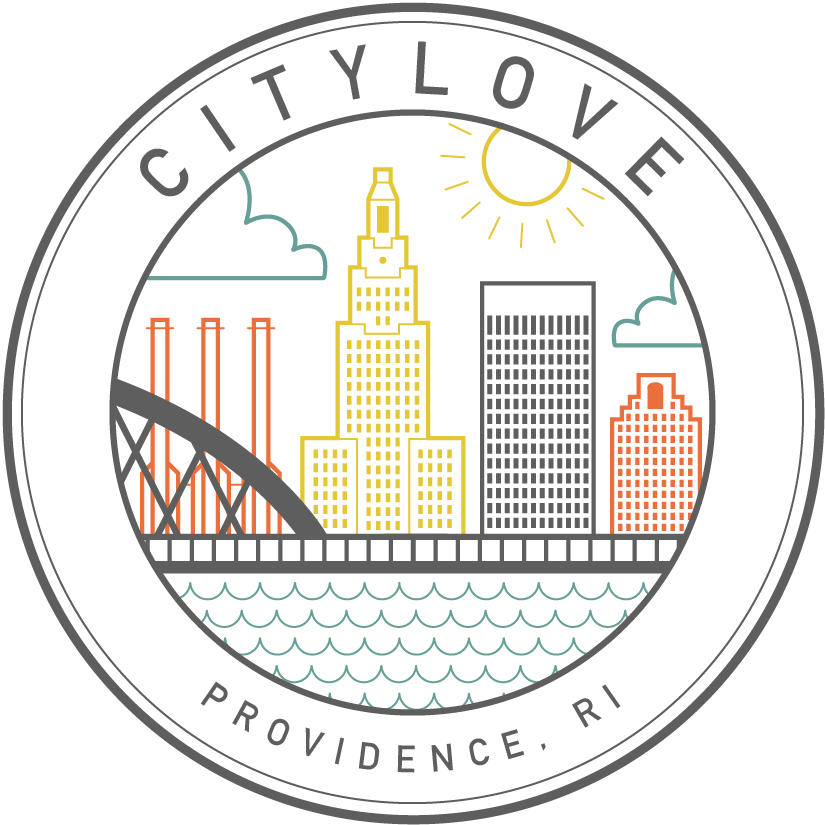Searching in Providence
Words by Katherine Gosnell
One afternoon last summer I ventured down to South Water Street in Providence. At this location one can take in, all at once, the city skyline and the energy of people gathering for leisure by the river cutting through downtown. I strolled down the street and looked to my right where photographers, street food vendors, and other city dwellers filled the pedestrian bridge. Restaurants lined my left until they stopped at a field, and here, 10,000 sunflowers waved hello. I walked closer to the flowers. They stood as tall as me.
A man in a yellow hat entered the field, armed with a bucket. He sunk two sticks connected by rope into the bucket’s soap water, and then lifted the wand up to spread his arms, easing his steps backwards. A colossal bubble emerged, and the wind carried it up towards the clouds. All of us in the field gazed at the iridescent sphere that floated with a wobble, poised in mid-air until―pop. We stood there for some time watching each globe spin, some swinging low into sunflowers and others floating above. I turned my head to face the sun, then to downtown Providence across the river. Golden hour struck. Its light sharpened the cityscape into two hues: orange-pink and murky purple. A long while passed, and the light faded. I traveled home and asked myself, what makes a man desire to blow bubbles in a sunflower field?
I wanted to hold that afternoon in my hand. Moments like the one in the field, where I respond, “this is beautiful,” move me to search for more good things around the city, treating the streets of Providence like a scavenger hunt. There are visuals scattered around that cause me to ask why they are there for every time they repeat. For example, while walking along Blackstone Boulevard, I came across tree stumps that someone had carved into mushrooms. After the first encounter, the wooden mushrooms seemed to sprout all over town, and with each one I got more excited. Another motif around Providence is the Hebrew letters sprayed outside the doorstep of Seven Stars bakery. As I walked down Broadway I saw them again. What did they say?
When the artist Agonza paints a mural, she stencils in a butterfly. The first one I found sat on the shoulder of Miss Rhode Island 2020, the portrait that covered a broken window from a summer riot outside the Modern Love storefront. A month later I saw a second one on an alley wall off Westminster St., the butterflies flying over raised fists. Why did Agonza mark her work with butterflies?
After spotting the third, fourth, and fifth butterfly, I needed to Google search. The Providence Journal states that Agonza paints butterflies for several reasons, one being they represent her path from trauma to empowerment. She even paints them on walls that used to be ordinary, rundown, or vandalized―the place itself is changed. Every time I saw her work I thought more about its meaning, that butterflies symbolize our longing to transform into something better, putting the worst behind us. The butterfly motif has repeated throughout the ages, all the way back to the day Jesus Christ rose to life out of the grave.
I asked my dad, who reads Hebrew, to translate the letters on the sidewalk. “They spell ‘Love,’” he replied. Here was another street artist writing a message that humanity has sought for. Even the lumberjack strove for something more when he went beyond the task of chopping down rotten trees to carving the stumps into a new life form.
Like the man who shaped the bubbles I, too, want to delight like a child delights in simple things, to move toward this wonder. As humans, we make these marks that manifest the craving of our deepest desires. In things we make and find and seek to comprehend, we participate in this search for God’s goodness, which peeks over the horizon, its fullness almost in reach.
My roommate at the time once fashioned a string with broken mirror pieces and hung the garland in our Providence apartment. The garland flowed from the ceiling hook down till it hid behind the couch arm rest, seeming to go on forever. Sometimes I stood next to the garland and would catch my reflection in the turning mirror pieces before losing it again. During the first wave of the pandemic, we longed for God’s goodness more than we ever had, and in our longing, His beauty arrived right in our living room. At golden hour, when the sun’s beams pierced through the window pane and struck the mirror pieces into a hundred million more, we sat in silence, soaking in the vibrancy of intensified light fragments on our walls. Other days we joined the energy, and I would run around the room, jump on my blue recliner, seize the string towards me, and twirl it between my fingers, the light dancing in a fury. We would cry or smile or both.
Katherine Gosnell
As CityLove Director, Katherine leads the blog, social media, and local partnerships, along with producing public art. She resides in Providence to draw the city and get to know her people.





